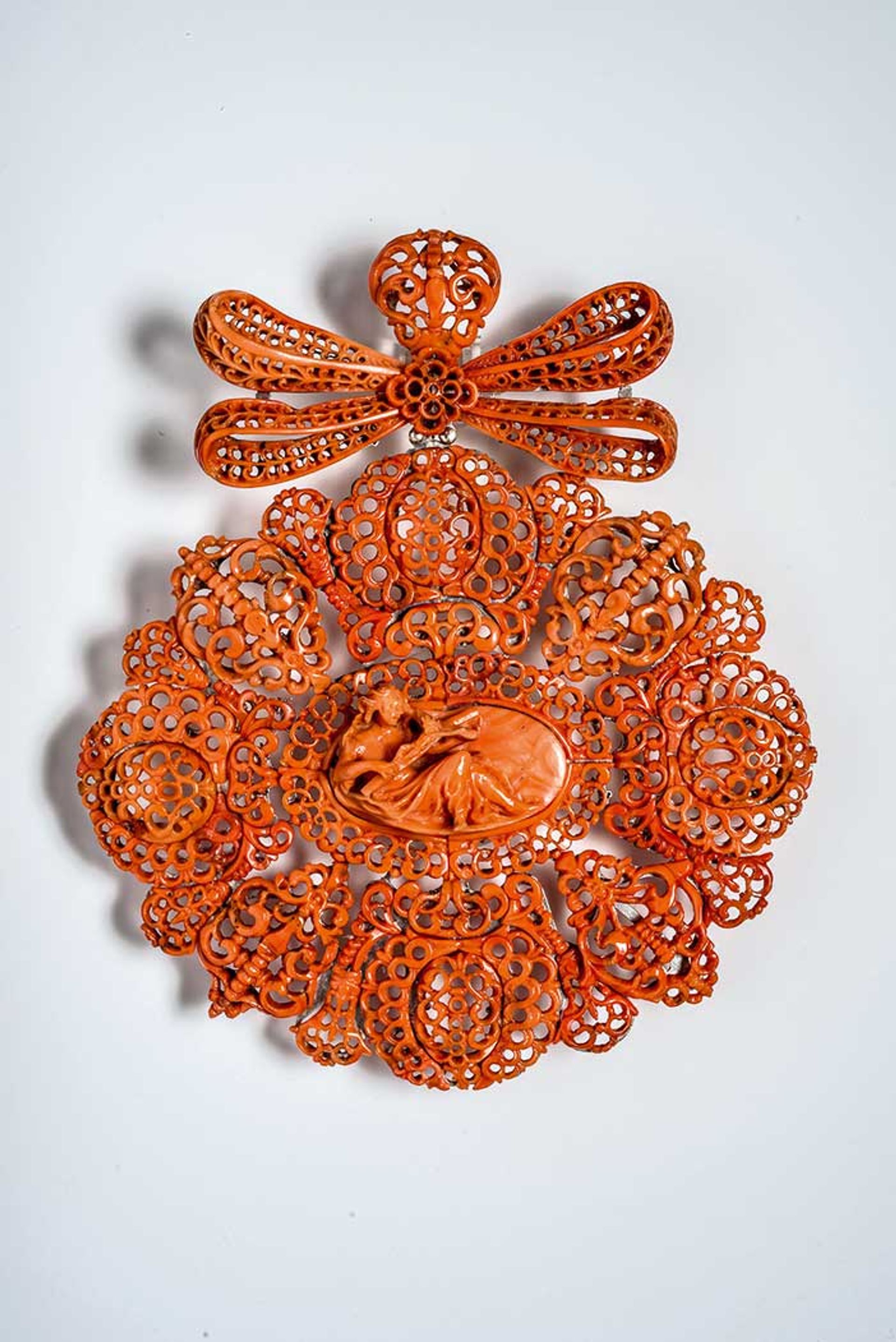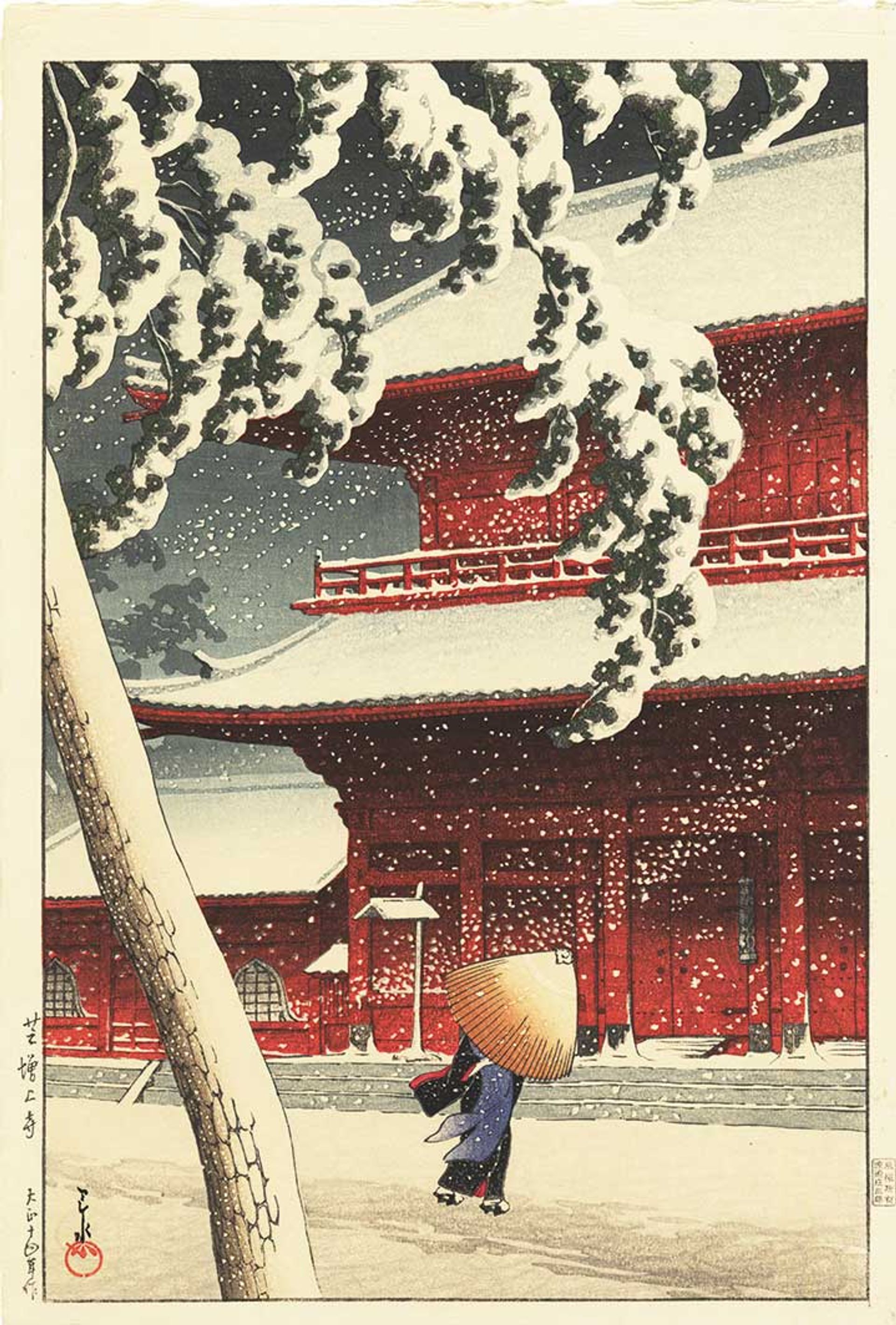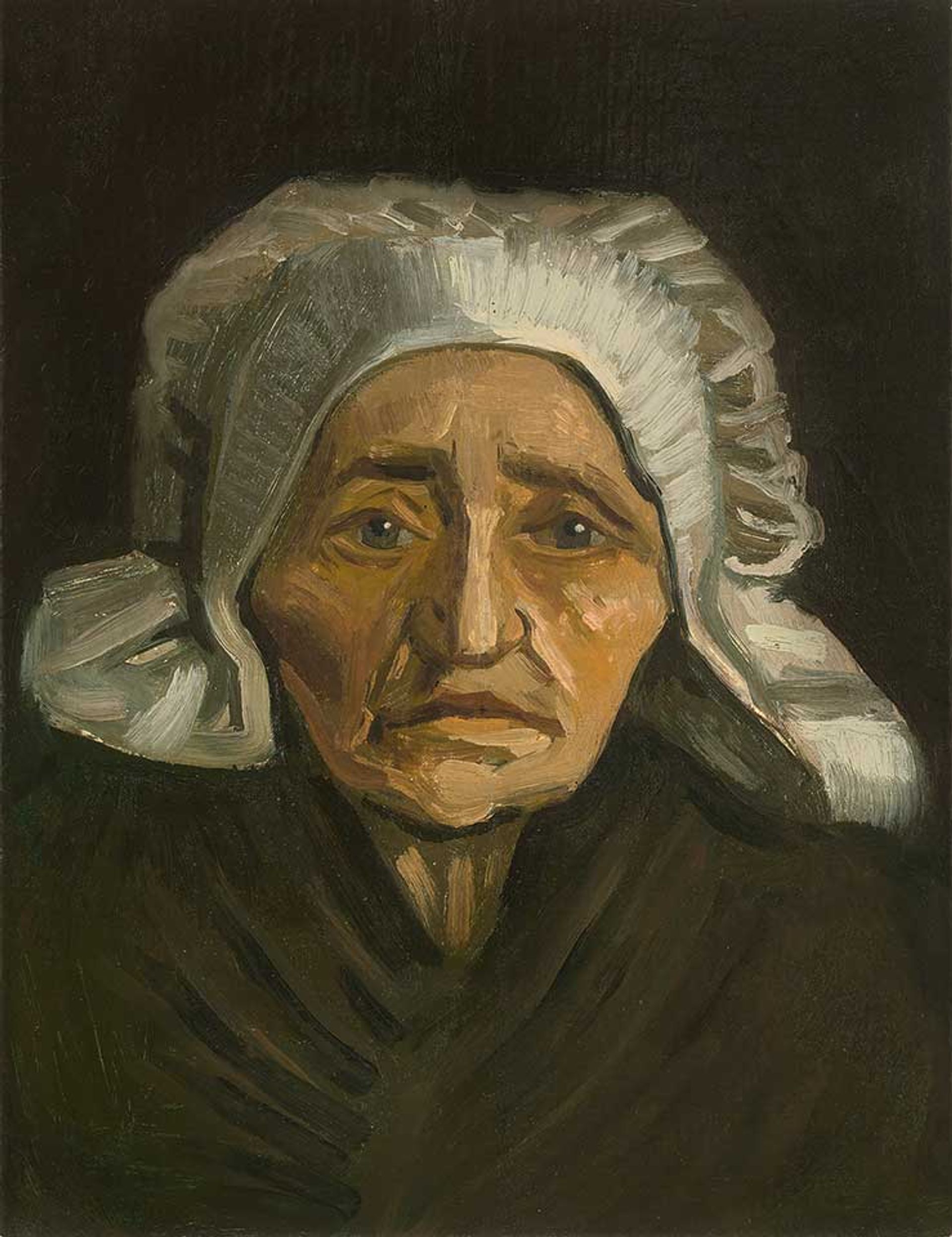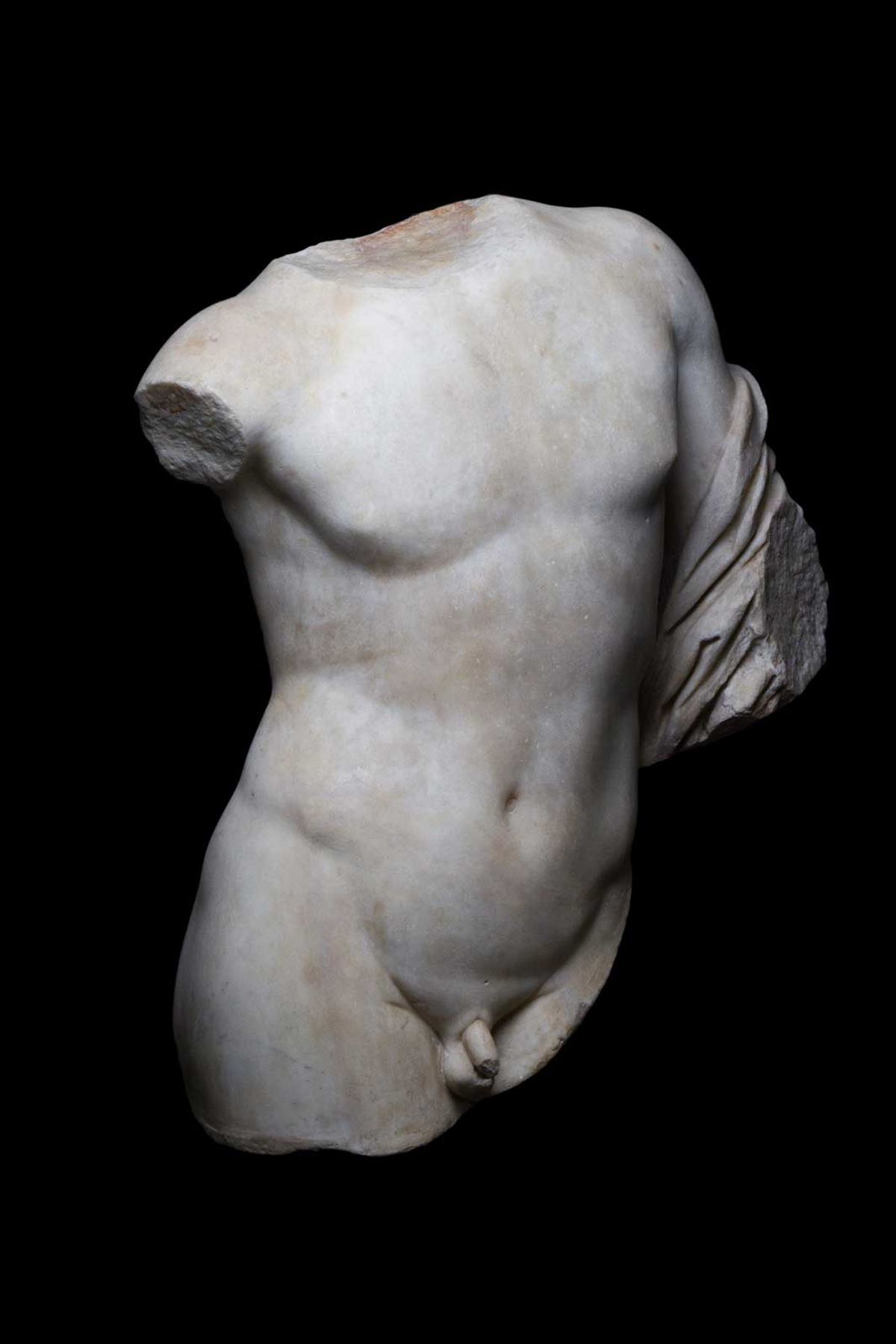Torso of Dionysus, 2nd century AD
€850,000
Galerie Chenel
This marble sculpture probably depicts a young Dionysus, the Greek god of wine, drunkenness, excess and the wilderness, also known to the Romans as Bacchus. Even though only the figure’s torso remains, the fabric draped over the arm—a regular feature on sculptures of Dionysus—provides a clue to its identity. The French archaeologist Salomon Reinach drew the bust when it was part of a collection in Rome, according to dealer Gladys Chenel. Its provenance can be traced back to the Belloni collection in Italy before it was purchased by the Greek-American dealer and collector Alexander Iolas in the 1960s. Iolas, one of the first gallerists to exhibit Andy Warhol, Max Ernst and René Magritte in New York and Paris, later gifted the Dionysus sculpture to his partner and collaborator André Mourgues. Chenel says that this “impeccable provenance”, along with a “very good state of conservation, wonderful patina and intense movement”, make the torso “a significant sculpture”.

Photo: Martín Vellón, courtesy Deborah Elvira gallery
Capezzale with the shape of a devotional pendant depicting Mary Magdalene, around 1700
€120,000
Deborah Elvira
A capezzale is a devotional object, often placed above or beside a bed or worn as a personal adornment. This 20cm-wide pendant made of coral and silver was created in Sicily and shares similarities of design with capezzali made in the Sicilian city Trapani. However, it is closer in style to Spanish designs of the wearable jewel known as rosa de pecho, and the central image—Mary Magdalene holding the cross—was a feminine subject of devotion more in accordance with Spanish tastes. “This makes the piece rare and extremely interesting for further research, as [it] all leads [us] to believe that it was manufactured for a Spanish commissioner, probably a woman, for a private chapel,” says the gallery director Deborah Elvira. The piece was purchased at auction from a private collection in Spain in 2023.
Incredibly intricate in design, the capezzale is made up of several pieces of carved and pierced coral that create a lace-like effect. The central medallion hangs from a delicately made coral bow. The coral is tied together with silver thread and attached to two riveted silver plates for support. The piece has undergone considerable cleaning and conservation to fix corrosion on the silver, as well as to replace some of the missing coral with an epoxy replica.

Photo © Galerie Tanakaya, Paris
Hasui Kawase, Shiba Zōjōji (Zojoji Temple, Shiba) (Taishō 14/1925)
Less than €50,000
Galerie Tanakaya
The Tokyo-born artist Hasui Kawase was one of 20th-century Japan's most important and prolific printmakers. He was known for his striking depictions of landscapes, from the nocturnal and snowy to the urban, many of which were made using traditional Japanese woodblock printing techniques. Shortly before his death in 1957, Hasui was declared a Living National Treasure by the Japanese government, and his printing technique was designated a mukei bunkazai (“intangible cultural asset”).
The Shiba Zōjōji print is an example of Shin-Hanga, or New Prints, an artistic movement that blended Western influence with traditional Japanese woodblock printing and was popular from around 1910 to 1960. The work is part of the series Tokyō Nijūkkei (20 views of Tokyo) and depicts the ninth-century Zojoji Temple. The image captures both the temple and a lone figure battling the snow and wind—a possible symbolic reference to the indomitable spirit of Tokyo, which was rebuilding after the devastating Great Earthquake of Kanto just two years earlier. “The design of the print is perfect: the movement is marked both by the snowflakes and by this character facing the elements, the red temple is immutable, there is a balance that everyone feels,” says Tamio Ikeda, the founder of Galerie Tanakaya.

Photo: Arte Fotografica, courtesy Berardi Galleria d’Arte
John William Godward, Perilla (1911)
€200,000-€300,000
Berardi Galleria d’Arte
The English painter John William Godward was famous for his Neo-Classical and Pre-Raphaelite depictions of Apollonian beauty between the 19th and 20th centuries. A protégé of the Dutch painter Lawrence Alma-Tadema, Godward showed his works at London’s Royal Academy from 1887. He was also a passionate collector, and his studio in London’s Fulham Road was filled with vintage statues, columns, fabrics and vases that helped inform the references to antiquity in his paintings.
Godward painted Perilla—the daughter of the Latin poet Ovid—during an extended stay in Rome in 1911. It is part of a small cycle of profile portraits he began in 1909 that were all purchased by the collector and dealer Eugene Cremetti. “The painting is particularly significant for the classicist values that emerge from the sophisticated profile of the Roman maiden,” says Elena Lago of Berardi Galleria d’Arte, describing Perilla as “an ethereal and precious composition”. The profile is set against a marble wall, a recurring motif found in Godward’s works of the 1910s.

Courtesy M.S. Rau, New Orleans
Vincent van Gogh, Tête de paysanne à la coiffe blanche
(around 1884)
$4.95m
M.S. Rau: Fine Art, Antiques and Jewels
Vincent van Gogh returned to his family home of Nuenen at age 30 and stayed for two years. Despite his reluctance to go back, it proved incredibly productive: he created one-quarter of his entire oeuvre there, including his famous The Potato Eaters (1885), depicting local peasants having their daily meal. The previous year, Van Gogh chose a peasant as the subject of another painting, Tête de paysanne à la coiffe blanche (head of a peasant woman with a white cap). However, this striking work—with thick brushstrokes, bold chiaroscuro and a limited, muddy palette—may evoke even more sympathy.
“This portrait was painted during a time of profound personal and artistic development for Van Gogh,” says Bill Rau, the owner and chief executive of M.S. Rau. “This painting helped Van Gogh appreciate his roots and the beauty of agrarian society, which set the course for his titanic career.” Rau adds that the piece is in a state of “impeccable preservation” with no signs of warping and perfectly adhered linen. It was last sold publicly at Sotheby’s in New York in 2014 for $1.2m.


